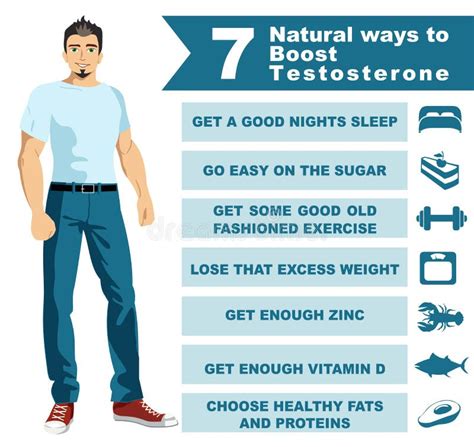The Desk Job Dilemma: Understanding Lower Back Pain
For many men, a significant portion of their day is spent sitting at a desk, a posture that, while seemingly harmless, can lead to chronic lower back pain. Prolonged sitting often results in poor posture, weakening of crucial core muscles, and tightening of the hip flexors and hamstrings. This imbalance places undue stress on the lumbar spine, leading to discomfort, stiffness, and eventually, debilitating pain. Fortunately, a targeted regimen of exercises can effectively counteract these negative effects, strengthening the supporting structures and promoting spinal health.

Key Principles for Preventing Back Pain
To effectively prevent lower back pain from desk work, an exercise program should focus on three core principles:
- Core Strengthening: A strong core acts as a natural corset for your spine, providing stability and support.
- Hip Mobility and Flexibility: Releasing tight hip flexors and hamstrings can alleviate pressure on the lower back.
- Spinal Mobility and Postural Correction: Encouraging healthy movement patterns in the spine helps maintain proper alignment.
Top Exercises for Men to Combat Lower Back Pain
1. Core Strengthening: The Foundation of Support
Bird-Dog
How to: Start on all fours, hands under shoulders, knees under hips. Keep your back flat and core engaged. Slowly extend your right arm straight forward and your left leg straight back, keeping them parallel to the floor. Hold for a few seconds, then return to the start. Alternate sides. Focus on controlled movement and stability, avoiding any arching of the back.
Benefits: Improves core stability, balance, and strengthens the muscles supporting the spine without excessive strain.
Plank
How to: Begin in a push-up position, but support your weight on your forearms instead of hands. Ensure your body forms a straight line from head to heels, engaging your core and glutes. Avoid letting your hips sag or rise too high. Hold for 30-60 seconds.
Benefits: Excellent for overall core strength, endurance, and stability, crucial for maintaining good posture.

2. Hip Mobility and Flexibility: Unlocking Tight Hips
Hip Flexor Stretch (Kneeling)
How to: Kneel on your left knee, with your right foot flat on the floor in front of you (90-degree angle). Keep your torso upright and gently push your hips forward until you feel a stretch in the front of your left hip. Hold for 30 seconds, then switch sides. Ensure your back remains straight.
Benefits: Counteracts the tightness in hip flexors caused by prolonged sitting, which can pull on the lower back.
Piriformis Stretch (Figure Four)
How to: Lie on your back with knees bent and feet flat on the floor. Cross your right ankle over your left knee, forming a ‘figure four’ with your legs. Gently pull your left thigh towards your chest, feeling the stretch in your right glute/hip area. Hold for 30 seconds, then switch sides.
Benefits: Releases tightness in the piriformis muscle, which can contribute to sciatic nerve pain and lower back discomfort.

3. Spinal Mobility and Postural Correction
Cat-Cow Stretch
How to: Start on all fours. As you inhale, drop your belly towards the floor, lift your chest and tailbone (Cow pose). As you exhale, round your spine towards the ceiling, tucking your chin and tailbone (Cat pose). Flow smoothly between these two positions for 10-15 repetitions.
Benefits: Improves spinal flexibility, mobilizes the vertebrae, and helps to relieve tension in the back.
Thoracic Spine Rotations (Seated)
How to: Sit upright in a chair with your feet flat on the floor. Place your hands behind your head or cross them over your chest. Gently rotate your upper body to the right, keeping your hips stable and facing forward. Return to center, then rotate to the left. Perform 10-12 repetitions per side.
Benefits: Increases mobility in the upper and mid-back, which can prevent overcompensation and strain in the lower back.

4. Glute Activation: Powering Your Posterior Chain
Glute Bridge
How to: Lie on your back with knees bent and feet flat on the floor, hip-width apart. Engage your glutes and lift your hips off the floor until your body forms a straight line from your shoulders to your knees. Hold at the top for a second, squeezing your glutes, then slowly lower. Perform 10-15 repetitions.
Benefits: Strengthens the glutes, which often become weak from prolonged sitting, providing better support for the lower back and pelvis.
Integrating Exercises into Your Daily Routine
Consistency is key. Aim to perform these exercises daily, or at least 3-4 times a week. Even short, frequent breaks during your workday for a few stretches or a quick plank can make a significant difference. Remember to always listen to your body and consult with a healthcare professional or physical therapist if you experience severe or persistent pain.

Conclusion
Lower back pain from desk work doesn’t have to be an inevitable part of your professional life. By incorporating a balanced routine of core strengthening, hip mobility, and spinal flexibility exercises, men can proactively protect their spine, improve their posture, and significantly reduce discomfort. Make these movements a regular part of your wellness strategy, and enjoy a healthier, pain-free workday.




